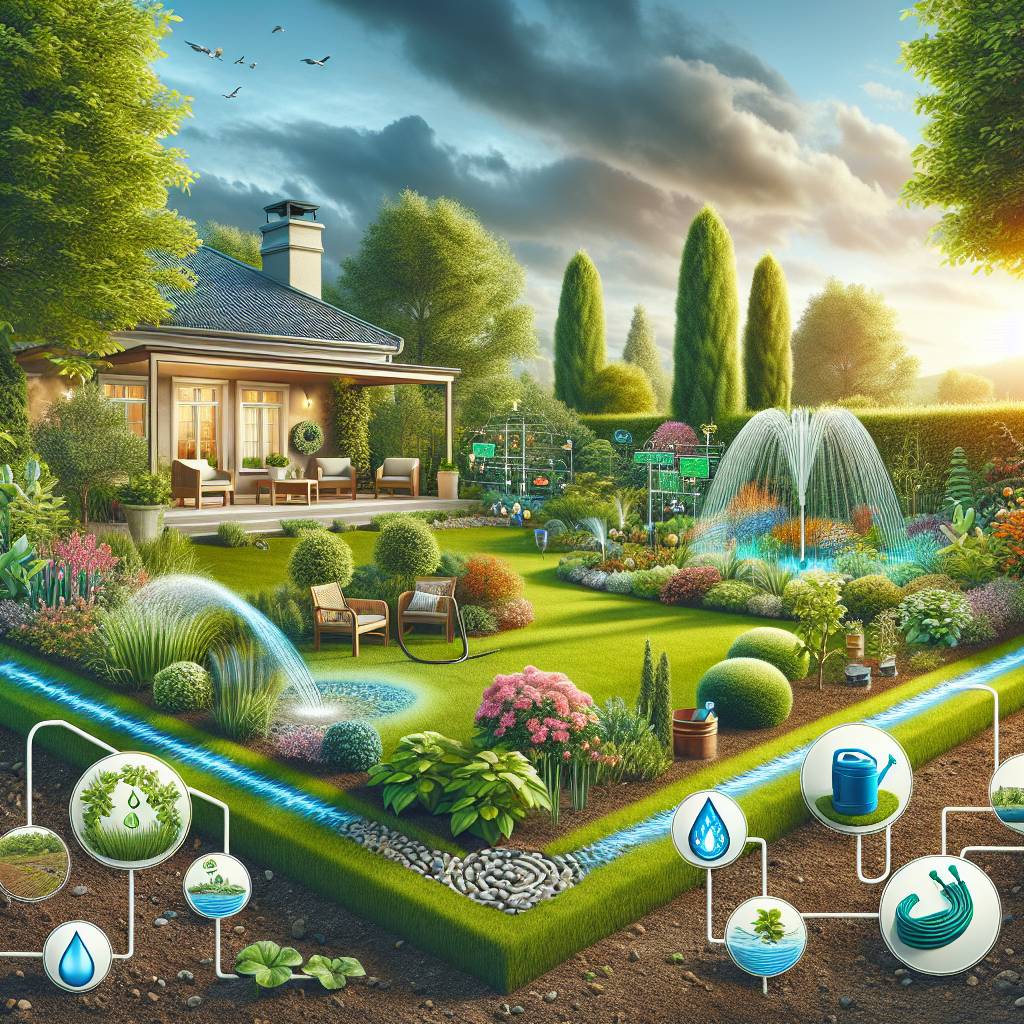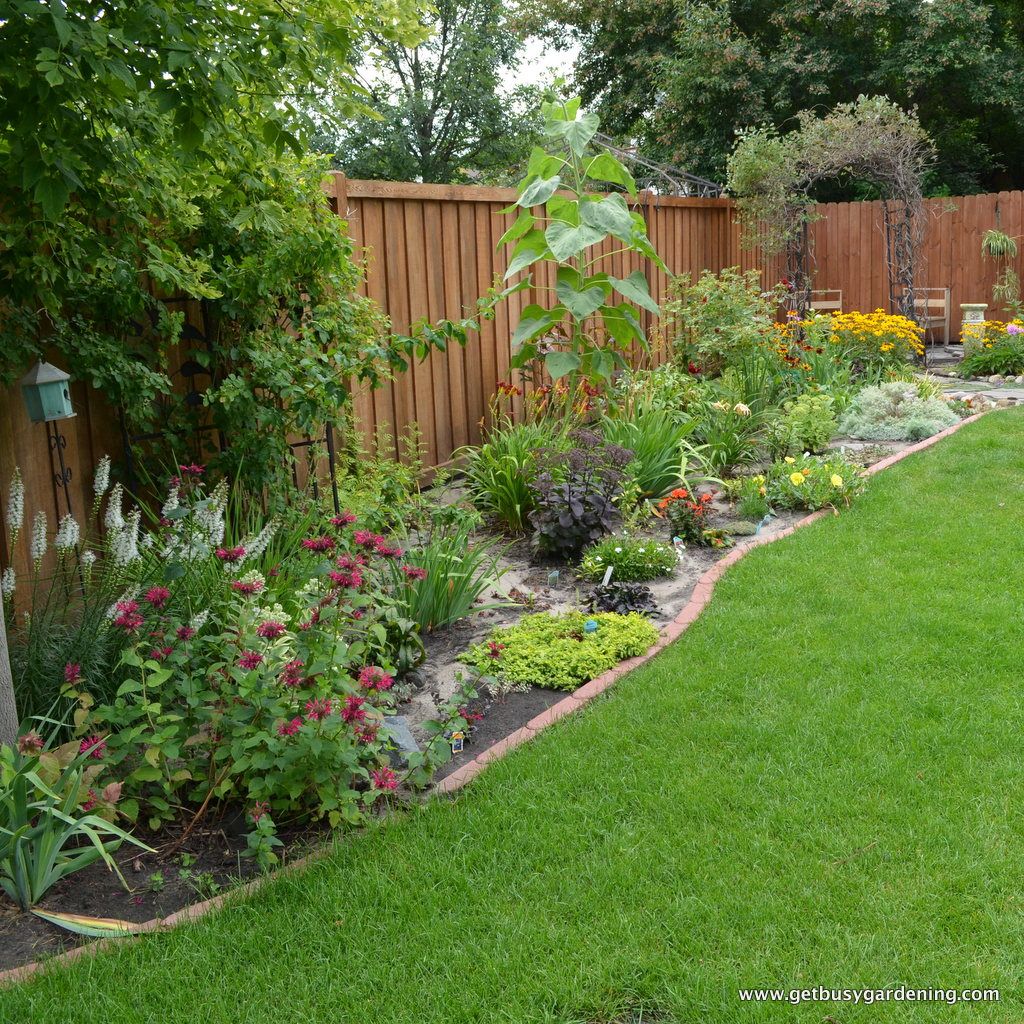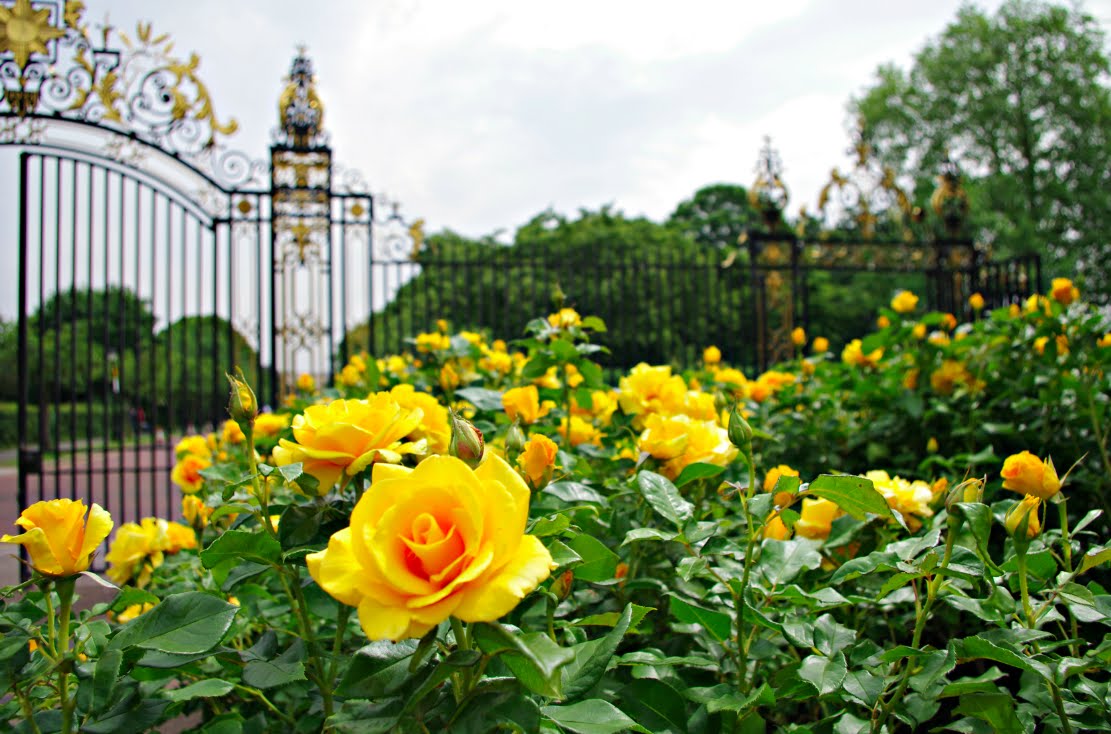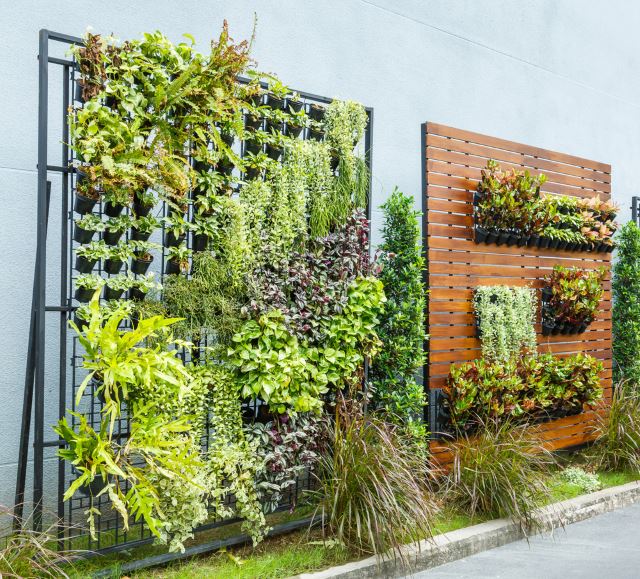Want to keep your lawn and garden lush while conserving water? We’ve got you covered! In this post, we’ll share practical and effective tips to help you minimize water usage without sacrificing the vibrancy of your outdoor space. From smart irrigation techniques to choosing drought-resistant plants with deep roots, we’ll explore simple yet impactful strategies that can make a significant difference in your water consumption. Whether you’re a seasoned gardener or just starting out, these easy-to-implement suggestions will not only benefit the environment but also save you money on your water bill. Get ready to transform your outdoor oasis into a sustainable haven with our expert advice.
Key Takeaways
- Implement efficient water conservation practices by using mulch, adjusting sprinklers, and watering during the early morning or late evening.
- Incorporate water-saving strategies for gardens such as choosing drought-resistant plants, using rain barrels, and installing drip irrigation systems.
- Consider smart irrigation systems that utilize weather data and soil moisture sensors to optimize water usage in your lawn and garden.
- Create eco-friendly habitats by including native plants, providing bird baths, and building a small pond to support local wildlife.
- Practice recycling and harvesting water by collecting rainwater, reusing household greywater, and considering a permeable hardscape for water absorption.
- Embrace indigenous flora in your landscape design to reduce water consumption, enhance biodiversity, and promote a sustainable ecosystem.
Efficient Water Conservation Practices
Smart Irrigation
Smart irrigation is a key strategy for water conservation and feeding in lawn and garden care. Weather-based irrigation controllers are designed to adjust watering schedules based on real-time weather conditions, preventing unnecessary watering during or after rainfall. Soil moisture sensors provide accurate data on the moisture levels in the soil, allowing for precise irrigation tailored to the specific needs of plants. Smart irrigation systems with remote control capabilities enable users to manage watering schedules conveniently from their smartphones or computers.
For example, instead of relying on fixed timers that may water your lawn even during heavy rains, a weather-based controller adjusts automatically based on the current weather conditions.
Mulching Techniques The use of organic mulch is an effective way to conserve water in gardens and lawns. Mulch acts as a protective layer over the soil, reducing evaporation and retaining moisture. By suppressing weed growth, mulch also prevents competition for water among plants. It’s essential to replenish mulch regularly to maintain its effectiveness in conserving water and providing insulation for the soil.
Consider this: Applying a layer of organic mulch around trees and shrubs can significantly reduce water loss through evaporation by up to 70%.
Drought-Resistant Grasses
Choosing drought-resistant grass species is crucial for achieving water-efficient lawns. Opting for low-water varieties such as buffalo grass or fescue helps minimize water consumption while maintaining an attractive lawn appearance. Overseeding with drought-resistant grasses further enhances lawn resilience against dry spells and reduces overall watering requirements.
For instance, replacing traditional turf with buffalo grass not only reduces water usage but also decreases maintenance needs due to its low-mowing characteristics.
Soil Maintenance Regular soil testing is fundamental in understanding its ability to retain moisture effectively. By adding organic matter like compost or leaf mold, you can improve soil structure and enhance its capacity for absorbing and holding onto water. Aerating the soil helps prevent compaction, promoting better infiltration of water into the ground where it’s needed most by plant roots.
Consider this: Healthy soils rich in organic matter can hold significantly more water, reducing runoff and increasing absorption by plants’ root systems.
Water-Saving Strategies for Gardens
Native Plants
One effective strategy is to opt for native plants. These plants are well-suited to the local climate, requiring less water to thrive. By incorporating a variety of native species into your garden, you can create an ecosystem that supports local wildlife while reducing water consumption. For instance, in arid regions, drought-resistant plants like succulents and cacti are excellent choices as they naturally conserve water.
By choosing indigenous flora over non-native varieties, you contribute to the preservation of natural resources. This approach not only minimizes the need for excessive watering but also promotes biodiversity within your garden.
Drip Irrigation
Another practical technique for conserving water in gardens is through the use of drip irrigation systems. These systems deliver water directly to the root zones of plants, ensuring efficient and targeted hydration. By employing drip lines or emitters strategically placed near plant roots, you minimize wastage from runoff and evaporation.
Drip irrigation is particularly beneficial for garden beds, shrub areas, and container plants where precise watering is essential. It allows you to provide adequate moisture without saturating the entire area unnecessarily.
Optimal Timing
Incorporating optimal timing into your watering routine significantly contributes to water conservation efforts in gardens. Watering early in the morning reduces evaporation rates while enabling plant roots to absorb moisture effectively. This practice also helps prevent fungal diseases by allowing foliage time to dry before evening sets in.
Conversely, avoiding midday watering during high temperatures prevents rapid evaporation and ensures that water reaches its intended targets rather than dissipating quickly due to heat exposure. Carefully scheduling evening watering sessions further minimizes prolonged leaf wetness which could lead to disease development on certain plant species.
Weed Management
An often overlooked aspect of water-saving techniques involves effective weed management practices within gardens. Weeds compete with desirable plants for available moisture in soil; therefore controlling their growth is crucial for minimizing unnecessary water usage.
Smart Irrigation Systems
Smart Irrigation Systems
Adjustable sprinklers play a crucial role in conserving water. By installing adjustable sprinkler heads, homeowners can customize watering patterns based on specific plant requirements and seasonal changes. Opt for rotating or oscillating sprinklers to ensure uniform water distribution across the lawn, effectively minimizing water waste. Adjusting the sprinkler settings allows for targeted watering, ensuring that each area of the garden receives the appropriate amount of water without overdoing it.
Conducting regular irrigation audits is essential in identifying leaks and inefficiencies within the system. These audits help monitor water pressure and distribution uniformity, optimizing overall system performance. By utilizing these audits to fine-tune watering schedules, homeowners can minimize water waste while maintaining a healthy garden or lawn.
Water-Saving Technologies
Implementing water-saving technologies such as rainwater techniques and water recycling for outdoor use significantly contributes to sustainable water conservation efforts. Homeowners can design efficient landscapes by incorporating features like wildlife gardens, stone incorporation, planter selection, effective mowing practices, aeration benefits, and more.
Designing Efficient Landscapes
Designing an efficient landscape involves selecting drought-resistant plants that require minimal watering while still adding beauty to outdoor spaces. Optimizing soil health through proper mulching techniques helps retain moisture in the soil for longer periods.
Incorporating native plants into gardens not only reduces the need for extensive irrigation but also supports local ecosystems by providing habitats for indigenous wildlife species.
Creating Eco-Friendly Habitats
Wildlife Gardens
Consider creating a wildlife garden. By planting native flowers, shrubs, and trees, you can attract birds, butterflies, and beneficial insects to your yard. These creatures help with pollination and pest control without the need for harmful chemicals. They contribute to the overall health of your garden ecosystem.
By incorporating a variety of plants that bloom at different times throughout the year, you can ensure a constant food source for these animals while minimizing water usage. For example, choosing drought-tolerant species like black-eyed Susans or coneflowers not only supports local wildlife but also reduces the need for excessive watering.
To further enhance your wildlife garden’s sustainability, provide sources of clean water such as birdbaths or small ponds. These additions offer drinking and bathing spots for visiting creatures without requiring large amounts of water.
Stone Incorporation
Another effective method in water-saving tips is integrating stones into your landscaping design. Using gravel paths or decorative rock mulch around plants helps retain soil moisture by reducing evaporation from the ground surface.
Moreover, strategically placing larger rocks in sunny areas creates pockets of shade that shield nearby plants from excessive heat exposure. This natural cooling effect lessens their water requirements while adding visual interest to your outdoor space.
In addition to conserving water, stone incorporation contributes to soil erosion prevention by providing stability against heavy rainfall or irrigation runoff.
Planter Selection
Selecting suitable planters plays a crucial role in promoting efficient watering practices in gardens and lawns. Opt for containers made from porous materials like terracotta rather than non-breathable plastic options as they allow better air circulation around plant roots which minimizes over-watering risks. Furthermore, choosing self-watering planters equipped with built-in reservoirs provides consistent hydration to plants without wasteful excesses.
Lawn and Garden Maintenance
Enhancing Soil Quality
Enhancing soil quality is crucial. By adding organic matter like compost or mulch, you can improve the soil’s structure and water retention. This helps reduce the need for frequent watering, making your yard more water-saving.
Furthermore, choosing native plants for your landscaping can also contribute to better soil quality. Native plants are adapted to the local environment and often require less water and maintenance than non-native species. They can help prevent erosion and promote healthy soil, reducing the overall water consumption in your yard.
Effective Mowing
Effective mowing plays a significant role in maintaining a water-saving lawn. Keeping grass at a slightly taller height shades the soil, reducing evaporation and promoting deeper root growth. This means that during dry periods, your lawn will be able to access moisture from lower levels of the soil, requiring less additional watering.
Using sharp mower blades ensures clean cuts on grass blades instead of tearing them. Torn grass is more prone to stress and requires more water for recovery. Regular mowing with sharp blades not only promotes healthier grass but also aids in conserving water by minimizing unnecessary stress on the lawn.
Aeration Benefits
Aerating your lawn brings multiple benefits. It helps alleviate compacted soils which can hinder proper absorption of nutrients and moisture by grassroots. By allowing air, water, and nutrients to penetrate deep into the ground through small holes made by an aerator tool or machine, you enhance root development while reducing surface runoff.
Moreover,aeration encourages microbial activity in the soil which breaks down thatch – a layer of dead plant material between green vegetation at ground level – improving nutrient circulation within the turf’s root zone. As a result,aeration facilitates improved drainage capabilities within your yard as well as optimal utilization of irrigation or rainfall without wastage.
Recycling and Harvesting Water
Rainwater Techniques
One of the most effective water-saving tips for lawn and garden is to utilize rainwater. You can set up a rain barrel or cistern to collect rainwater from your roof’s downspouts. This collected water can then be used to irrigate your lawn, flower beds, or vegetable garden. By doing so, you not only conserve water but also reduce your utility bills.
Rain barrels come in various sizes and styles, making it easy to find one that suits your needs and aesthetic preferences. Once installed, they require minimal maintenance while providing a sustainable source of water for outdoor use. Using rainwater reduces the demand on local water supplies during dry periods.
Another technique is installing a rain chain. Instead of allowing rainwater to simply run off the roof and into gutters, a decorative chain can guide the flow into a container or directly onto plants below. This allows you to capture some of the rainfall without needing an actual barrel.
Water Recycling for Outdoor Use
In addition to collecting rainwater, another effective method is recycling gray water from inside your home for outdoor use in maintaining lawns and gardens. Gray water refers to gently used household wastewater from sources like sinks, showers, bathtubs, and washing machines.
By redirecting this gray water through simple plumbing systems or hoses equipped with filters into your yard or garden areas (excluding edible crops), you can significantly reduce fresh water consumption while keeping your landscape healthy.
When using gray water for irrigation purposes:
- Ensure that any cleaning agents used in the household are environmentally friendly.
- Avoid using gray water on edible plants due to potential health risks.
- Regularly monitor soil conditions as well as plant health when utilizing gray water resources.
Landscape Design for Conservation
Water-Efficient Layouts
Creating a water-efficient layout is crucial. One effective way to achieve this is by incorporating features such as permeable paving, which allows rainwater to seep into the ground rather than running off into storm drains. Another essential aspect is designing your garden in a way that minimizes water runoff and promotes infiltration. This can be achieved through strategic grading of the land, using swales or berms to capture and retain water, preventing it from flowing away.
Including features like rain gardens or bioswales in your landscape design can significantly contribute to conserving water. These natural depressions are designed to collect and absorb rainwater runoff from roofs, driveways, or lawns before it reaches the sewer system or bodies of water. By integrating these elements into your lawn and garden, you not only reduce water usage but also help prevent pollution of natural water sources with harmful chemicals.
Plant Zoning Another key aspect of landscape design for conservation is plant zoning – grouping plants with similar watering needs together. By arranging plants according to their specific moisture requirements, you can ensure that each area receives precisely the amount of irrigation it needs without wasting excess water on plants that don’t require it.
For instance:
- Grouping drought-tolerant plants in areas exposed to full sun.
- Placing high-moisture requirement plants in shaded spots where they’re less prone to drying out quickly. This approach not only optimizes watering efficiency but also contributes towards maintaining a healthy ecosystem within your lawn and garden.
Embracing Indigenous Flora
Benefits of Native Plants
Embracing indigenous flora in your garden or lawn can bring numerous benefits. Native plants are well adapted to the local climate, soil, and pests, making them low-maintenance and resilient. They require less water because they have evolved to survive in their natural environment without extra irrigation. By choosing local species, you also support the local ecosystem by providing food and habitat for native wildlife such as birds, bees, and butterflies.
Planting native flowers can enhance biodiversity by attracting pollinators like bees and butterflies that play a crucial role in the reproduction of many plant species. This not only adds beauty to your garden but also contributes to the overall health of the environment. Indigenous flora often has deep root systems that help prevent erosion and improve soil structure. As a result, they require less fertilizer since they thrive naturally in their specific region.
Selecting Local Species
When selecting plants for your garden or lawn, prioritize local species over exotic ones. Look for varieties that are naturally found in your area’s ecosystem as they will be better suited to thrive with minimal intervention from you. Consider visiting a nearby botanical garden or nature reserve to observe which plants grow naturally there.
Timing and Technique for Irrigation
Watering Schedules
Creating a watering schedule is crucial for effective water conservation in your lawn and garden. Determine the best times to water, which is usually early in the morning or late in the evening when evaporation rates are low. This ensures that more water reaches the roots of plants instead of being lost to evaporation.
To establish an efficient watering routine, consider factors such as the type of soil, plant species, and local climate conditions. For instance, sandy soils drain faster than clay soils, so they may require more frequent watering but with less volume each time. Native plants often have lower water requirements compared to non-native species since they are adapted to local weather patterns.
Keep in mind that overwatering can be detrimental to plants by promoting shallow root growth and creating favorable conditions for diseases. By adhering to a consistent watering schedule, you can prevent both underwatering and overwatering while ensuring optimal growth for your lawn and garden.
Monitoring Weather Patterns
Being mindful of weather patterns plays a significant role in optimizing irrigation practices. Keep track of rainfall levels as excessive rain might eliminate the need for additional watering. On the other hand, during dry spells or drought conditions, you may need to adjust your watering schedule accordingly.
Utilize weather forecasts or apps to stay informed about upcoming precipitation or temperature changes. Some modern irrigation systems even integrate weather sensors that automatically adjust watering schedules based on real-time weather data.
Incorporating indigenous flora into your landscape design from the previous section also aligns with monitoring weather patterns effectively because native plants are naturally adapted to local climate conditions and typically require less maintenance once established.
Summary
You’ve learned some killer water-saving tips for your lawn and garden. By embracing indigenous flora, smart irrigation systems, and efficient conservation practices, you can make a real difference. Don’t forget about creating eco-friendly habitats and recycling water to keep your outdoor space lush and thriving while being kind to the environment.
Now it’s time to put these strategies into action. Start small by adjusting your irrigation timing and techniques, then work your way up to a complete landscape redesign for conservation. Your efforts not only save water but also create a sustainable, beautiful oasis right in your backyard. Get out there and make your lawn and garden the envy of the neighborhood while being a champion for water conservation!
Frequently Asked Questions
How can I conserve water in my garden and lawn?
To conserve water in your garden and lawn, consider using efficient irrigation systems like drip irrigation, collecting rainwater for watering plants, choosing drought-resistant plants, and mulching to retain moisture.
What are some eco-friendly practices for maintaining a healthy garden?
Implementing eco-friendly practices involves using organic fertilizers, composting kitchen scraps to enrich the soil, planting native species to support local wildlife, and avoiding chemical pesticides that harm beneficial insects.
When is the best time to water my lawn and garden?
The best time to water your lawn and garden is early in the morning or late in the evening when temperatures are cooler. This reduces evaporation loss and allows the water to penetrate deeply into the soil where plant roots can access it.
How can I design an environmentally friendly landscape for conservation?
Design an environmentally friendly landscape by incorporating native plants that require minimal watering, creating habitat areas for wildlife with diverse plantings, integrating permeable hardscapes to reduce runoff, and utilizing natural contours of the land for effective water management.
What are some strategies for recycling and harvesting water in my yard?
You can recycle and harvest water by installing a rain barrel or cistern to collect rainwater from your roof, redirecting downspouts towards planted areas instead of paved surfaces, reusing household greywater on non-edible plants after proper treatment.






